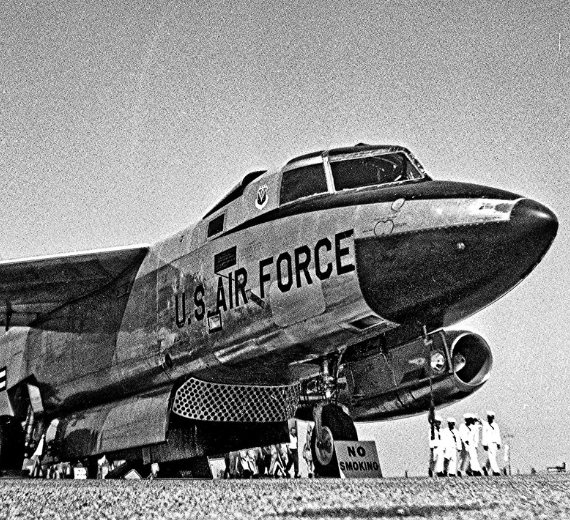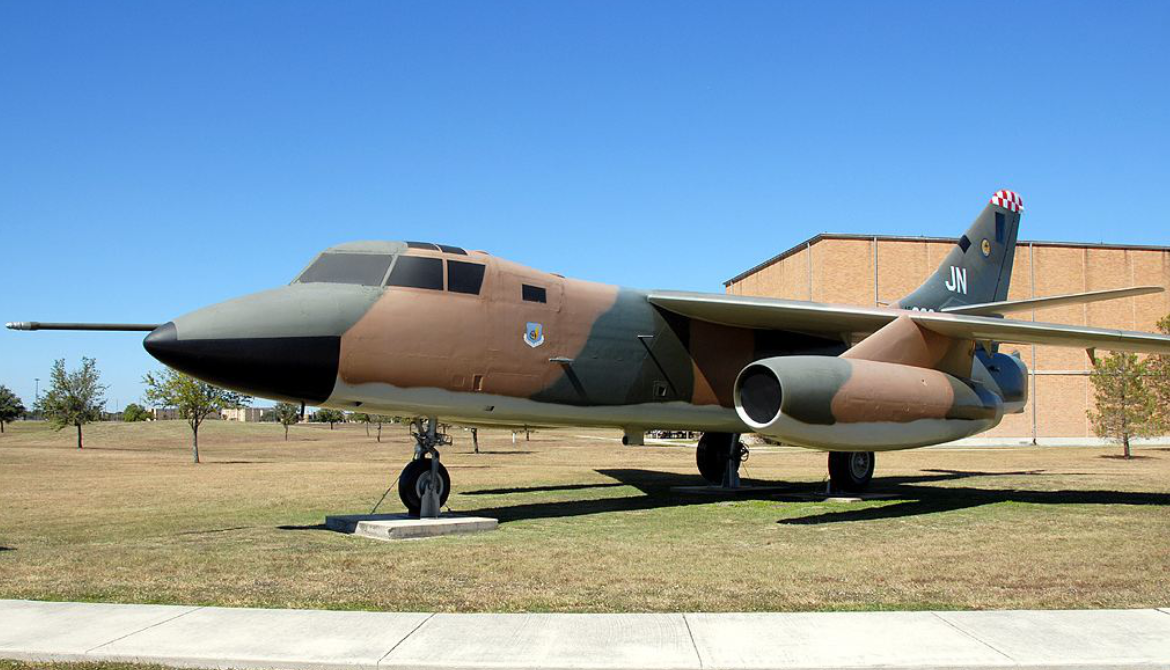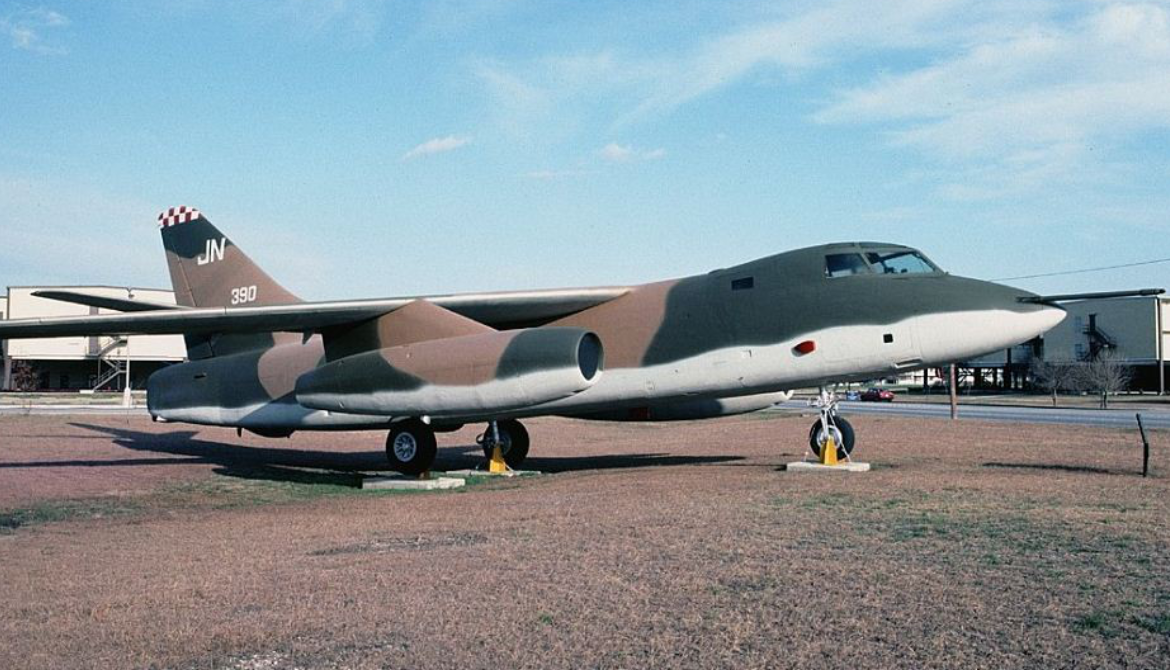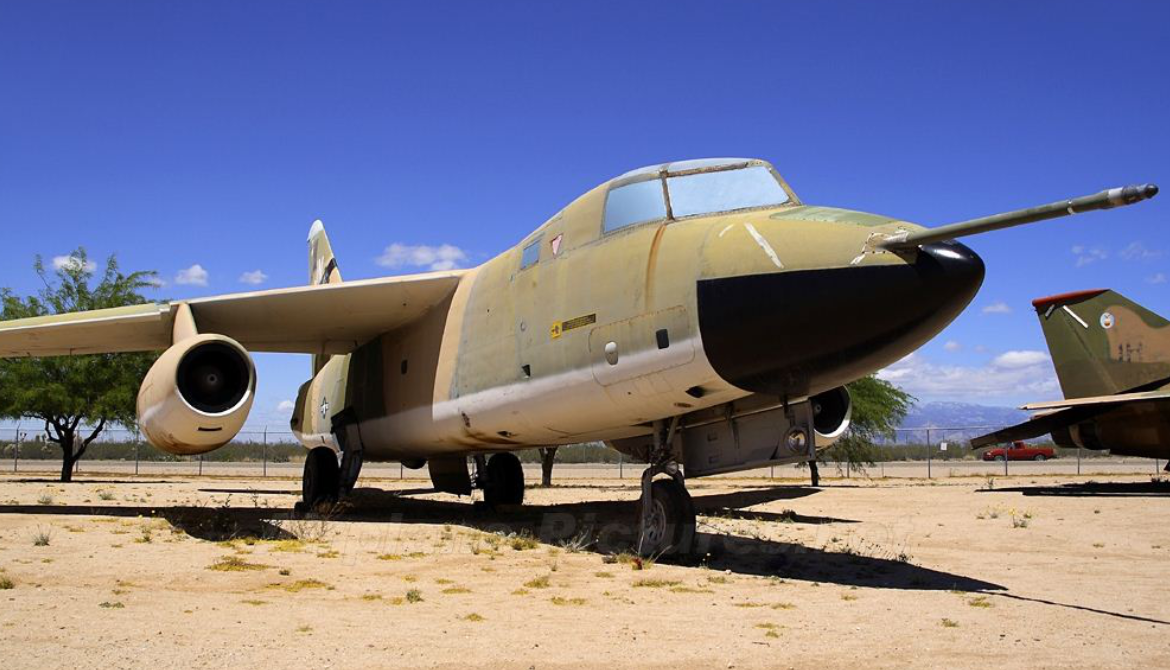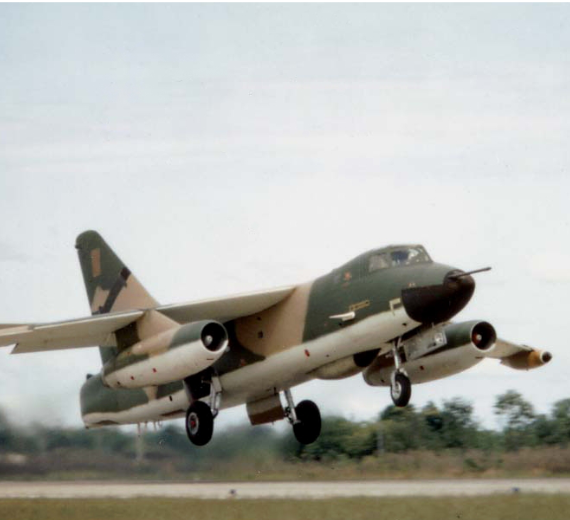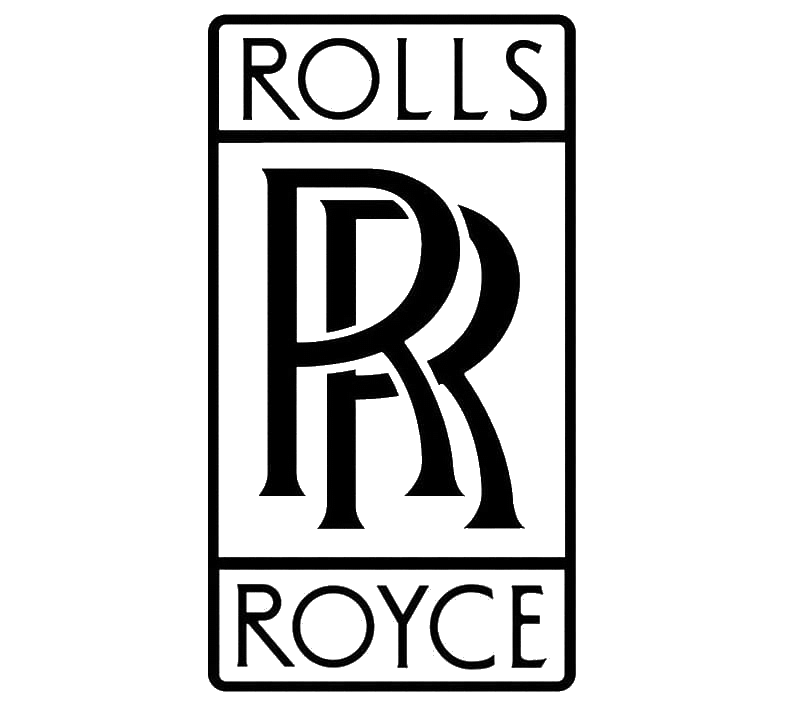.
History
Douglas B-66 Destroyer

The Douglas B-66 Destroyer is a light bomber that was designed and produced by the American aviation manufacturer Douglas Aircraft Company.
The B-66 was developed for the United States Air Force (USAF) and is derivative of the United States Navy's A-3 Skywarrior, a heavy carrier-based attack aircraft. Officials intended for the aircraft to be a simple development of the earlier A-3, taking advantage of being strictly land-based to dispense with unnecessary naval features. Due to the USAF producing extensive and substantially divergent requirements, it became necessary to make considerable alterations to the design, leading to a substantial proportion of the B-66 being original.
Performing its maiden flight on 28 June 1954, the aircraft was introduced to USAF service during 1956. The standard model, designated B-66, was a bomber model that was procured to replace the aging Douglas A-26 Invader; in parallel, a photo reconnaissance model, the RB-66, was also produced alongside. Further variants of the type were developed, leading to the aircraft's use in signals intelligence, electronic countermeasures and weather reconnaissance operations. Aircraft would commonly be forward deployed to bases in Europe, where they could more easily approach the airspace of the Soviet Union. Multiple variants would be deployed around Cuba during the Cuban Missile Crisis. They would also see use during the American intervention in the Vietnam War, typically operating as support aircraft for other aircraft that were active over the skies of North Vietnam and Laos, as well as missions to map SAM and AAA sites in both countries. The last examples of the type were withdrawn during 1975.

During 1956, deliveries to the USAF commenced. A total of 145 RB-66Bs would be produced. In service, the RB-66 would function as the primary night photo-reconnaissance aircraft of the USAF during this period; accordingly, many examples served with tactical reconnaissance squadrons based overseas, typically being stationed in the United Kingdom and West Germany. A total of 72 of the B-66B bomber version were built, 69 fewer aircraft than had been originally planned. A total of 13 B-66B aircraft later were modified into EB-66B electronic countermeasures (ECM) aircraft, which played a forward role in the Cold War between the United States and the Soviet Union, and were stationed at RAF Chelveston with the 42nd Tactical Reconnaissance Squadron, who performed the conversion during the early 1960s. They would rotate out of an alert pad in France during the time that the 42nd had them.
These aircraft, along with the RB-66Cs that the 42nd received, would subsequently see combat service during the Vietnam War . Unlike the US Navy's A-3 Skywarrior, which performed bombing missions in the theatre, the Destroyer was never once used to perform bombing missions in Vietnam.0
KmCeiling
0
KmCombat RANGE
0
Km/hAircraft Speed
0
Max Crew
Photo Gallery
Douglas B-66 Destroyer


Douglas B-66 Destroyer
General Info
-
-
- Crew: 3 (Pilot, Navigator and EWO)
- Length: 75 ft 2 in (22.91 m)
- Wingspan: 72 ft 6 in (22.10 m)
- Height: 23 ft 7 in (7.19 m)
- Wing area: 780 sq ft (72 m2)
-
Powerplant
-
-
- Empty weight: 42,549 lb (19,300 kg)
- Gross weight: 57,800 lb (26,218 kg)
- Max takeoff weight: 83,000 lb (37,648 kg)
- Powerplant: 2 × Allison J71-A-11 (later Allison J71-A-13) turbojet engines, 10,200 lbf (45 kN) thrust each
-
Performance
- Maximum speed: 548 kn (631 mph, 1,015 km/h) at 6,000 ft (1,800 m)
- Cruise speed: 459 kn (528 mph, 850 km/h)
- Combat range: 782 nmi (900 mi, 1,448 km)
- Ferry range: 2,146 nmi (2,470 mi, 3,974 km)
- Service ceiling: 39,400 ft (12,000 m)
- Rate of climb: 5,000 ft/min (25 m/s)
Armament
-
- Guns: 2 × 20 mm M24 cannon in radar-controlled/remotely operated tail turret
- Bombs: 15,000 lb (6,800 kg)
- APS-27 and K-5 radars
-
-
Avionics
.
Links to Youtube & Others
The MB-339 was developed during the 1970s in response to an Italian Air Force requirement that sought a replacement for the service's existing fleet of Aermacchi MB-326s.
Douglas
B-66 Destroyer
The Skyraider was produced too late for use in World War II, but became the backbone of United States Navy aircraft carrier in the Korean War
Youtube Link
On 26 July 1954, two Douglas Skyraiders from the aircraft carriers USS Philippine Sea and Hornet shot down two Chinese PLAAF Lavochkin fighters off the coast of Hainan Island.
